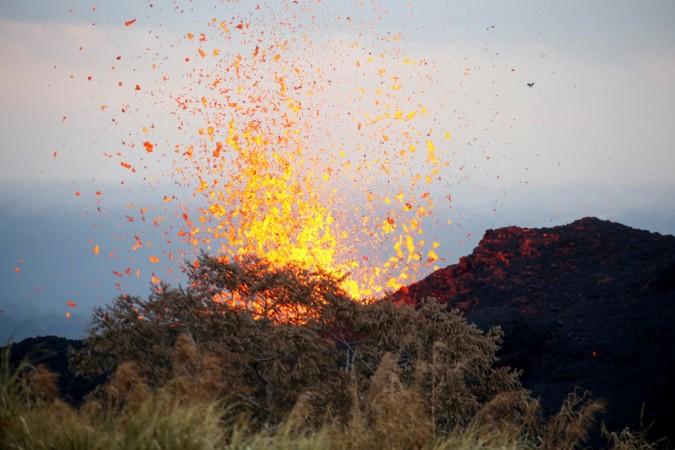
Trouble for the residents of Hawaii's Big Island seems far from getting over after Kilauea volcano erupted early this month. The lava from the volcano, after destroying acres of land, has reached the Pacific Ocean, sending hydrochloric acid and volcanic glass particles into the air called 'laze'.
US Geological Survey (USGS) has confirmed that two lava flows reached the ocean along the southeast Puna coast on May 20.
Laze, which is a mixture of "lava" and "haze", can cause lung, eye and skin irritation.
For the navigable waters around the Kilauea Volcano, the US Coast Guard has enforced a Lava Entry Safety Zone.
"All waterway users should be aware of the hazardous conditions associated with such an event. Getting too close to the lava can result in serious injury or death," said Lt. Cmdr. John Bannon, waterways management lead for the Coast Guard's Honolulu sector, according to CNN.
Eight years ago this laze proved deadly. "This hot, corrosive gas mixture caused two deaths immediately adjacent to the coastal entry point in 2000, when seawater washed across recent and active lava flows," the HVO said, according to the website.
Thousands of people were evacuated after toxic sulfur dioxide gas shrouded the area. People were warned of volcanic smog or vog and acid rain, which can be as corrosive as diluted battery acid.
More than 600 earthquakes shook Hawaii's Big Island since April 30 triggering Kilauea, which is one of the world's most active volcanoes, to erupt.









!['Had denied Housefull franchise as they wanted me to wear a bikini': Tia Bajpai on turning down bold scripts [Exclusive]](https://data1.ibtimes.co.in/en/full/806605/had-denied-housefull-franchise-they-wanted-me-wear-bikini-tia-bajpai-turning-down-bold.png?w=220&h=138)



